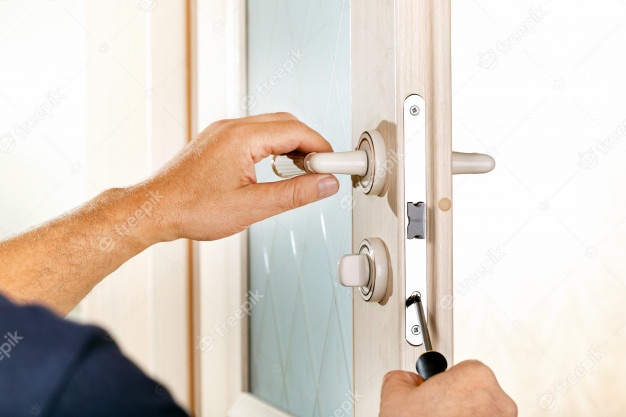When building or upgrading your own security system, one of the many things that may surprise you is how wide the selection of types of locks really is. Naturally, it is important to know what they are in detail to help you know which would work the best for you.
- Padlocks
Arguably the most common and easiest to distinguish for the common people is the padlock. It’s easy to “install” and use, an all-around type of lock that is easier to replace than repair as it rarely gets damaged in the first place. The padlock is the only type of lock that isn’t permanently attached to anything. They come in different shapes and sizes to fit a specific purpose but they come in just two different varieties, combination and keyed. The combination type is easier to decode, as it only needs some dials to press for it to open, while the keyed version is much harder to pry open.
- Deadbolt
Deadbolt locks are generally installed on front doors, most accurately described as a flat device with a keyhole that locks and unlocks doors. This type of lock comes in three primary varieties: single, double, and lockable thumbturn. The main weakness of the deadbolt lock is that it is easy to open through any nearby opening where people can turn the thumbturn, if there is one, and gain access to any place or room they want to enter. It still depends on which type you feel is most suitable for the door you have in mind.
- Knob Locks
This type of lock is most frequently installed along with a deadbolt in residential situations, although it can be used on its own as well, it generally isn’t advised to be used on external doors. Knob locks aren’t for main security functions, since the lock itself is located inside the knob, not the door. They are easy to break off with a hammer or wrench, completely rendering their function useless. Reconsider using a knob lock for your front door, it may be safer to use it on your bathroom or other doors instead.
- Lever Handle Lock
These are the locks you may see in the inner doors of establishments and businesses. The lever function makes them very easy to open, perfect for a place where people are expected to be going in and out of areas.
- Cam Locks
Cam locks are small and handy, perfect for cabinets and mailboxes that need to be private. They come in several different lengths and can use a variety of tailpieces or “cams” to interface with another locking mechanism. Cam locks rotate in 90 or 180 degrees for you to gain access to a small container.
- Rim/Mortise Lock
Both locks are commonly used in commercial settings, although similar in appearance, the rim and the mortise lock differ in the way their lockin systems operate. The mortise lock is built with a cam on the back that revolves as the key is turned in the lock. Meanwhile, the rim lock is a threaded stem that turns the lock along with the key.
- Euro Profile Cylinder
Sometimes referred to as DIN Cylinders, the Euro Profile Cylinder is quite common in Europe as well as in North America and other parts of the world. It is relatively standard, held by a single screw, making the type easy to remove because of the lack of reinforcement. They come in several varieties: single cylinder (one-sided), double cylinder, and single cylinder with thumbturn.
- Jimmy Proof Deadbolt
They’re a surface-mount lock frequently found in apartments and double doors. If you were to relate it to woodworking, it looks very similar to a dovetail joint. They can be attached to any door, making them easy to install, and therefore preferred by many.
- Wall Mounted Lock
As the name suggests, this type of lock is directly mounted into the wall connected to the door or opening. They can be used for small storages, safes, and establishments, and they’re frequently built with alarm sensors.
- IC Cylinder
The Interchangeable Core Cylinder is frequently used in larger institutions and businesses and are known for their easy ability to re-key the lock by swapping out the core without taking the lock apart. A separate key is used to take apart the core of the lock without the need to disassemble everything. This makes it very easy to upgrade, hence why it is preferred by businesses.
- Furniture Lock
Like the cam lock, the furniture lock can be used for cabinets and desks, what differentiates it is that it can be safely used for sliding doors as well. Using a key, a furniture lock opens when you turn it and the rod that keeps things secure retracts into the body.
- Rim Latch Lock
The Rim Latch Lock has a cylinder on one side and a surface mount latch lock on the other, letting it auto-lock the door behind you. Although it isn’t necessarily designed to be able to take much force, you can use it on external locks by pairing it with other locks.
There are still a number of locks that weren’t listed here. However, it is important to note that a locksmith’s input on what type you should use can make a huge difference. Their experience and skill can help you out, and they can recommend locks that they know will protect you.
When it comes to your security, don’t just settle for what’s available and convenient. Here at What’s The Damage, we show locksmith prices throughout the UK to help you compare. We hope that the short description of the previously mentioned lock types helps you out!

